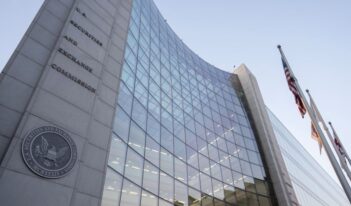
Regulation 1.0 provided a framework for balancing the interests of the public and regulated parties.
For over twenty years, I have had one of the best seats in the house to observe the workings of regulation from all angles. I have had the opportunity to organize congressional hearings, draft legislation, serve as a commissioner at a regulatory agency, teach financial regulation, and now sit on the board of an audit regulator. All these experiences have helped shape my belief that regulation is vital to the welfare of our democracy. But this experience also fuels my concern that we need to address new dilemmas raised by changing technologies. The environment in which the regulatory system functions is changing rapidly. As the economy and society change, regulation needs to evolve as well.
I call the direction in which we are heading—whether we like it or not—Regulation 2.0, or the next generation of regulation. The language of “Regulation 2.0” focuses us on the revolution in communications and digital technology. And it contrasts with our regulatory beginnings, which I call Regulation 1.0.
The U.S. experiment in federal regulation largely began after the Civil War. The formation of modern corporations, coupled with mass production, produced rapid changes in the U.S. economy, with long-lasting effects. This American “industrial revolution” demanded substantial amounts of capital for the building and operation of factories, mines, and railroads. Corporate investment drove rapid economic growth that was largely beneficial.
But there were unintended and unwelcome effects. Building the infrastructure of the nation was not cheap, easy, or fair. Managers flexed the power of the corporation to maximize profits and reduce competition through consolidation. Unrestrained by laws, regulations, or even ethics, managers engaged in price fixing, discriminatory pricing, extortion, and rampant worker exploitation.
The great muckraking journalist, Henry Demarest Lloyd, when describing the power of the railroad barons and their companies, summarized the situation this way: “These incidents in railroad history show most of the points where we fail … to maintain the equities of ‘government’—and employment— ‘of the people, by the people, for the people.’”
As accusations of abuse by railroad customers and suppliers increased, as did violence and social unrest, the state of Illinois attempted to restrict the rates that railroads could charge. But the U.S. Supreme Court ruled that only Congress had the power to regulate shipments between states.
The problem was complex. The corporations propelling the nation’s economy to new heights were also creating social harm and unrest. Congress created a solution to address the risks and threats by crafting its own innovation in 1887: the first federal independent agency, the Interstate Commerce Commission.
The Supreme Court described the advent of administrative agencies as “a response to the felt need.” It was a practical solution to a practical problem.
I refer to this model of commissions, boards, and the like, operating until recently in the world of the tangible, as first-generation regulation, or Regulation 1.0. Reg 1.0 is where we still are.
The U.S. government’s first regulatory intervention into the oversight of big business required expertise for determining railroad rates that were “reasonable and just.” The aim was to manage conflicts of interests and protect the public. And those are still largely the goals today.
Congress would return to this model repeatedly when public-private conflicts occurred in other industries or events demanded reform. Each agency was a response to a defined public-interest problem.
The creation of the Federal Reserve Board in 1913, for example, was a direct reaction to the crash of 1907. The Federal Trade Commission was established in 1914 to deal with increasing concentration in American industry in violation of the antitrust laws.
Fourteen agencies created between 1933 and 1940 were all reactions to the Great Depression And the more recent additions of the Environmental Protection Agency, the Occupational Safety and Health Administration, and the Consumer Financial Protection Bureau were all in response to their own corresponding policy needs and challenges.
The work of all these administrative agencies to date has operated in the universe of the tangible: namely, people and paper. This was true whether the function was granting permissions, considering the bases for policy, or conducting investigations and enforcement.
The U.S. Securities and Exchange Commission (SEC) illustrates the model. It was created in 1934 as part of the second of two laws designed to respond to the market problems that led up to the stock market crash in 1929.The new laws said that companies offering securities for sale to the public must tell the truth about their business operations, the securities they sell, and the risks involved in investing in those securities. And any intermediaries who sell and trade securities—that is, brokers, dealers, and exchanges—must also treat investors fairly and honestly.
To ensure that companies and intermediaries are operating in the markets fairly and honestly, the SEC, like other administrative agencies, can deploy certain tools in carrying out the responsibilities bestowed by Congress to establish and then enforce binding rules and standards.
These rules must be ones for which compliance is amenable to inspection and is enforceable. Inspect-ability and enforceability are constraints that require the rules to be targeted largely to paper or people—or both.
For example, a prospectus written on paper must be filed with the SEC and provided to investors about the offering and sale of securities. Companies need to provide written “continuing disclosures,” such as annual reports and other documents, that can be used by investors for current information to be used for investment decisions after the initial offering. Securities transactions must be confirmed by written forms of confirmation. Securities prices must be transparent and are aggregated onto a consolidated tape, which was once known at the ticket tape.
Similarly, the SEC identifies and prohibits certain types of conduct by people who are operating in the markets. The Commission has disciplinary powers over regulated entities and persons associated with the regulated entities.
With its focus on paper and people, the SEC is an example of Regulation 1.0. I think it is one of the best examples over time of an independent administrative agency that tailors its rules to balance the interest of the public and the groups it regulates, in an ecosystem that reflects what documents say and what people do.
The question confronting the SEC today—as with all other regulatory agencies—is whether, or perhaps how, Regulation 1.0 can continue. As the economy moves away from direct human actors and a paper-based environment into a new reality created by the digital revolution, in which data moves at the speed of light, in what direction should regulation head?
This essay is part of a three-part series based on remarks delivered at the Annual Distinguished Lecture on Regulation at the University of Pennsylvania Carey Law School on March 29, 2023.
A fully formatted version of this entire three-part series is also available for download as a single, integrated PDF article.




